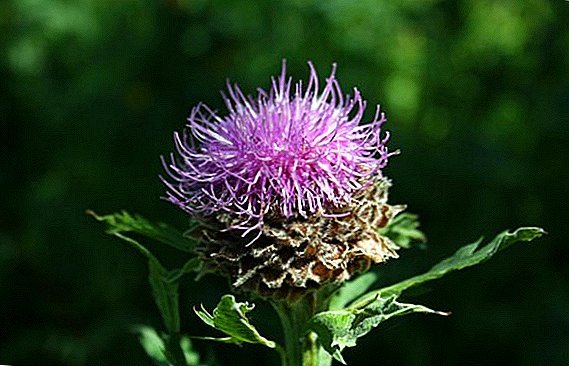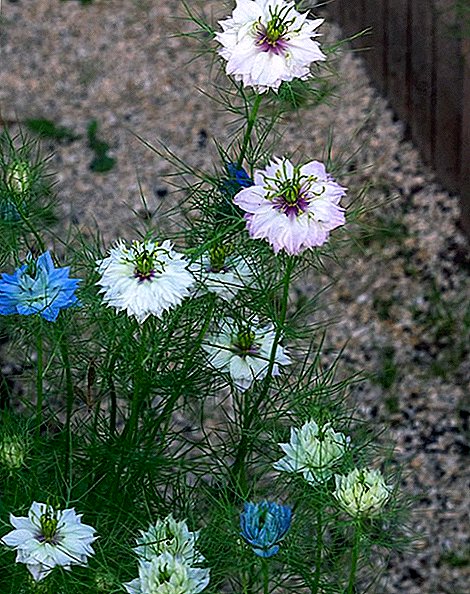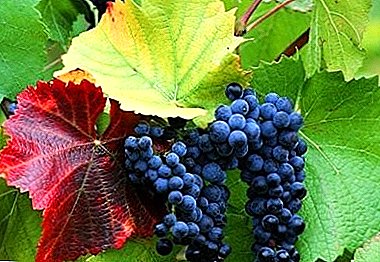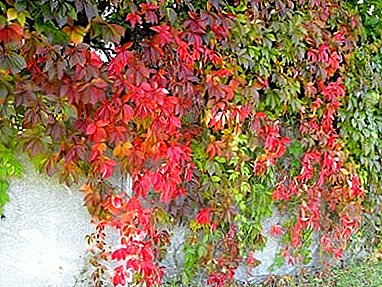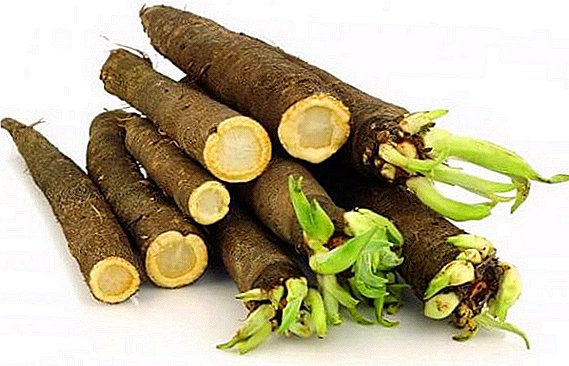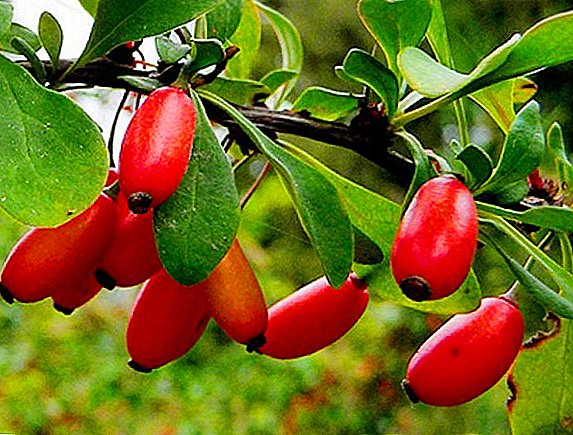
Carrots are one of the most commonly used vegetables. And this vegetable is grown by all gardeners, such as potatoes or onions. Grown crop must be preserved, because It can not be used immediately.
There are many ways to store, we will tell you how to store vegetables for the winter in the cellar.
Useful properties of vegetables
Carrots are one of the most popular vegetable crops among gardeners. It is easy to grow in the garden, in the greenhouse or on the balcony.
First of all, carrots are fiber, creating a long feeling of satiety and stimulating digestion.
It is well known what kind of vitamin in carrots is the main one. This carotene is essential for healthy eyes and overall wellness. This, by the way, is the use of carrots for children.
Useful properties of carrots:
 carrots are carbohydrates and glucose;
carrots are carbohydrates and glucose;- the content of pectin and mineral substances;
- weight-loss diet product;
- carrots contain potassium and its salts, which strengthen the heart and walls of blood vessels;
- it is rich in antioxidants that fight free radicals;
- cleanses the body of harmful substances and strengthens the immune system;
- during pregnancy contributes to the proper development of the fetus;
- enriches mother's milk with vitamins;
- enhances the activity of the glands of the gastrointestinal tract.
The benefits and harms of carrots are determined by the amount of its consumption. When used immensely, drowsiness, lethargy and even headaches can occur.
Carrots can be consumed daily, 50-100 grams in the form of a salad before the first course or on an empty stomach for gastritis with low acidity, in diseases of the liver, pancreas.
Carrot juice removes fatigue, improves appetite, complexion and vision, weakens the toxic effect of antibiotics on the body, strengthens hair and nails.
Storage
What properties should fruits intended for long-term storage:
- Fruits must be sufficiently mature with the absence of any signs of rotting, disease, and various flaws (for example, a carrot eaten or incised carrots should not be taken into storage).
- From suitable varieties suitable for long-term storage, you should choose not too juicy and delicate: the rougher the carrot looks, however strange it may be, it will be better preserved. Varieties with a high content of vitamins and having a delicate look are best eaten first.
- The longer the carrot ripens, being in the ground, the more organic acids and vitamins of group C accumulate in it, which means that it is more susceptible to deterioration during storage. However, such a carrot is most useful.
- Earlier all spoil varieties with shortened roots.
- Conical shaped carrots are generally more resistant to long-term storage.
- The roots are harvested longer, harvested at the age of 100-110 days.
- The most strongly affecting the subsequent storage factors for cultivation: poor soil, too frequent watering or excessive use of nitrogen fertilizers.
The basis of good preservation lies in the health of root crops, depending not only on climate, the state of the soil in which they were grown, but in many respects on their variety.
 Choosing carrot seeds, you should pay attention to such a factor - whether they are intended for long-term storage. First of all, you should pay attention to zoned varieties, specially bred for a particular climate.
Choosing carrot seeds, you should pay attention to such a factor - whether they are intended for long-term storage. First of all, you should pay attention to zoned varieties, specially bred for a particular climate.
Overwhelmingly in the regions of Russia The period of favorable growth and development of carrots is very limited. Spring is long, autumn is early ... When planting late-ripening carrots, it happens that they do not ripen, do not accumulate enough sugar and fiber in themselves.
And, as you know, a large delay between harvesting and storing the crop for storage has a negative effect on the safety of root crops.
Optimal storage varieties are:
- Nevis F1.
- Gribovchanin F1.
- Nandrin F1.
- Canada F1.
- Mango F1.
- Nantes 4.
- Nerak F1.
- Rosal
- Nanteysk.
- Monanta
- Incomparable.
- Cyrano.
- Samson.
- Typhoon.
- Valeria.
- Chance.
- Moscow winter, etc.
- How to store carrots in the cellar in the winter in bags of sugar.
- Necessary conditions for the storage of carrots and beets in packages in the basement.
- Features storage of carrots in the sand.
- An affordable way to store carrots in sawdust.
Pros and cons of sphagnum
Benefits from the use of moss:
- moss has peculiar preserving properties, keeps inside the necessary amount of carbon dioxide, contributes to its accumulation, which favorably affects the safety of the crop;
- in contrast to sand or clay, moss is very light, additionally it does not make heavier boxes with carrots;
- it is hygroscopic, due to this property the necessary air exchange during the storage of the crop is provided, in a dry state it has the ability to absorb water twenty times its own weight;
- It has an increased iodine content, which gives moss good bactericidal and disinfecting properties.
The only disadvantage of moss use is the fact that sphagnum moss does not grow in any locality.
Training
To store carrots in moss, you must:
- prepare in advance the moss;
- purchase plastic or wooden boxes.
Collection
 Sphagnum moss is a perennial plant growing on marshland. It has antibacterial properties that prevent rotting.
Sphagnum moss is a perennial plant growing on marshland. It has antibacterial properties that prevent rotting.
Forest moss can be harvested before storage at any time of the year, provided there is no snow cover.
After collecting sphagnum moss, it is necessary to follow some simple rules for its processing.
Here they are:
- moss is sifted and dried;
- then it is displayed on plastic bags;
- Another moss storage option is to cover it with a thick tarp on top.
In this way harvested moss sphangum can lie in a cool place for three months. But keep in mind that it is harvested again every year.
detailed instructions
What to do:
- Cut the tops of carrots. Important. Removing the tops ensures the safety of nutrients and the variety of vitamins in the root and has a positive effect on the long preservation of the carrot itself, preventing its rapid drying out or rotting.
- Remove the top of the vegetable with a thickness of 1 cm, even cut. Then dry the carrots.
- Before placing the carrots directly in the storage place, you need to carefully sort it again.
- Unwashed and dried in the open air carrots for a day placed in a cool room, then in pre-harvested wooden or plastic boxes lay it in layers, covering each layer of carrot moss.
Important. Moss-covered carrots should not be placed closely, like "sprats in a barrel." Subject to this recommendation, the correct harvest will be stored until summer.
Possible problems
Rodents
The stored carrot can be spoiled by rodents, and a cannibal will help in the fight against them - dried Saracen mint. The boxes in which the carrots are lined with moss should be covered with leaves and cannula stalks and the rodents will not touch the boxes with the harvest.
Mold and fungi
 For the disinfection of premises from mold and fungi, it would not be superfluous to use a 2% bleach solution (1 kg per 150 sq. M). This solution covers all the walls of the room in which it is planned to leave the harvest for storage, and whiten them 2 weeks before harvesting the carrots.
For the disinfection of premises from mold and fungi, it would not be superfluous to use a 2% bleach solution (1 kg per 150 sq. M). This solution covers all the walls of the room in which it is planned to leave the harvest for storage, and whiten them 2 weeks before harvesting the carrots.
Before whitewashing, dilute 2 kg of hydrated lime and 300 g of copper sulphate in 10 liters of water. Each square meter of wall takes about 0.5 liters of mortar.
If the carrot is not infected with an infection (for example, white rot), it can still be poorly stored due to adverse conditions, mechanical damage, and also because of the variety. The fact is that not all varieties of carrots are intended for long-term storage.
Violation of temperature
It is extremely important to maintain the temperature during storage of carrots, since the slightest change in temperature, for example, by 2 degrees violates the “rest” of a carrot, from which it begins to germinate, ache, and fade.
Having correctly selected a variety of carrots designed for long-term storage, following all the described guidelines for preparing root crops and using sphagnum moss for laying between the rows, you can keep the carrots fresh and juicy until the next harvest.


 carrots are carbohydrates and glucose;
carrots are carbohydrates and glucose;